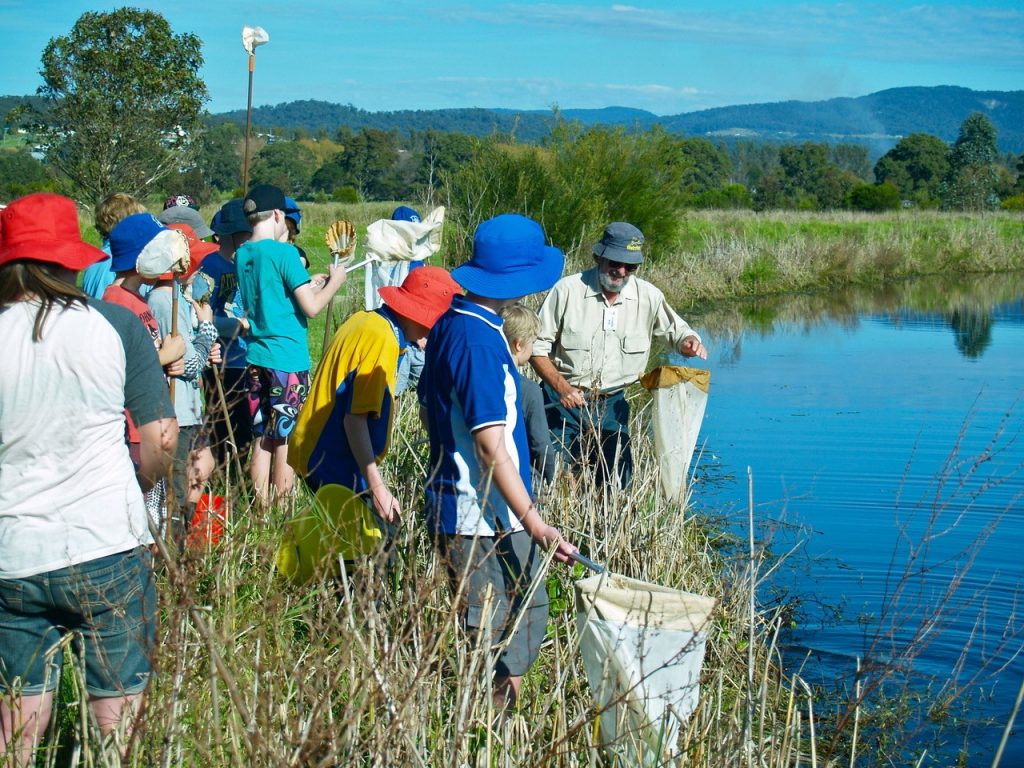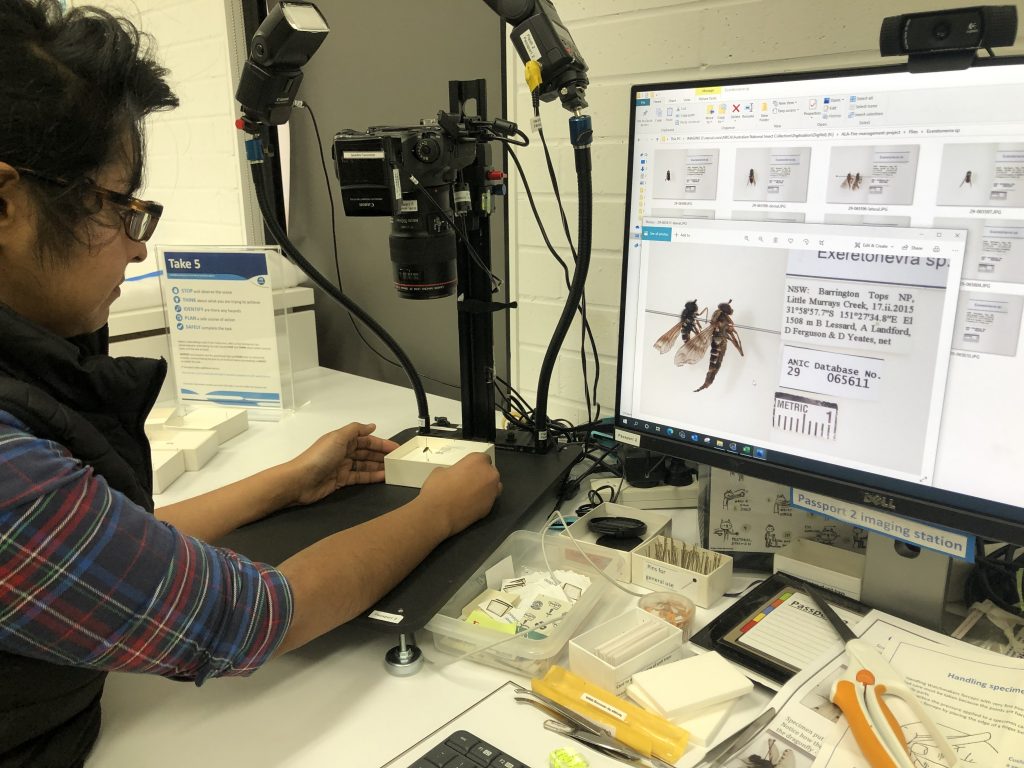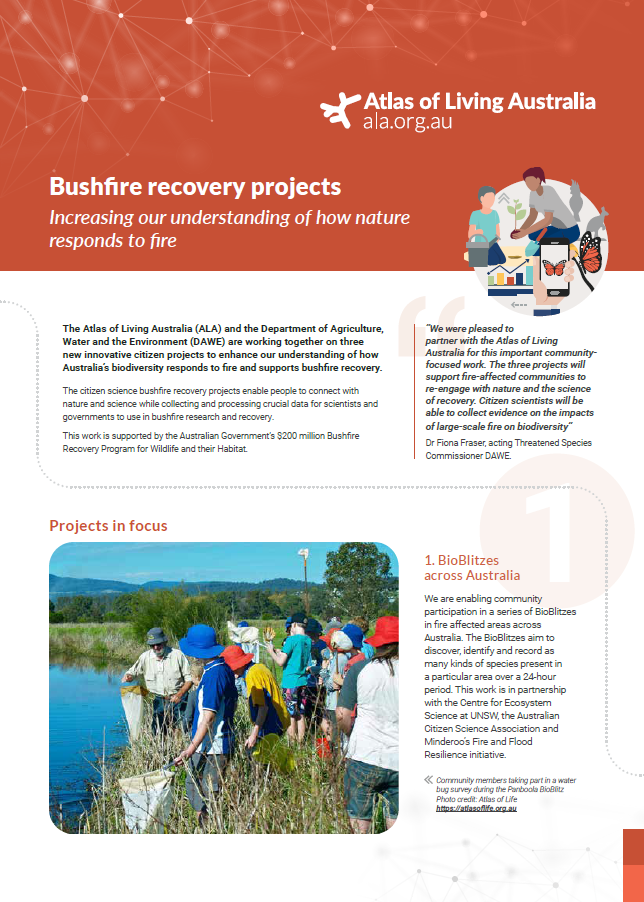The citizen science bushfire recovery projects enable people to connect with nature and science while collecting and processing crucial data for scientists and governments to use in bushfire research and recovery. This work is supported by the Australian Government’s $200 million Bushfire Recovery Program for Wildlife and their Habitat.
“We were pleased to partner with the Atlas of Living Australia for this important community focused work. The three projects will support fire-affected communities to re-engage with nature and the science of recovery. Citizen scientists will be able to collect evidence on the impacts of large-scale fire on biodiversity.”
Dr Fiona Fraser, acting Threatened Species Commissioner, DAWE.
Projects in focus
1. BioBlitzes across Australia

We are enabling community participation in a series of BioBlitzes in fire affected areas across Australia. The BioBlitzes aim to discover, identify and record as many kinds of species present in a particular area over a 24-hour period. This work is in partnership with the Centre for Ecosystem Science at UNSW, the Australian Citizen Science Association and Minderoo’s Fire and Flood Resilience initiative.
2. Bushfire recovery: focus on flowers
This project focuses on developing resources for flora-focused citizen science groups to monitor and record information about how flowers, trees and foliage recovery after a fire. This work is in partnership with the Hawkesbury Institute for the Environment at Western Sydney University.
3. Digitising our insect collections

The insect digitisation project focuses on a list of priority insect species. Members of the public participate by using the DigiVol platform to transcribe insect specimen labels in CSIRO’s National Insect Collection. DigiVol is run by the Australian Museum and is supported by Atlas of Living Australia (ALA) infrastructure. Volunteers have already digitised and transcribed 1000s of specimens. Many of the insect specimens being digitised have few or no occurrence records in the ALA and some specimens date back nearly 100 years. This information will help us understand historical changes in insect distribution across space and time.
The Atlas of Living Australia delivering research-ready data for bushfire research and recovery
This work builds on the lead role the ALA took after the 2019-20 bushfires to explore how the citizen science sector could be supported
and coordinated to help deliver research-ready data in the bushfire space. Products from this work included the Citizen Science Bushfire
Project Finder and tailored blogs highlighting projects to participate in pre and post disaster events.
IN PARTNERSHIP WITH:
- Department of Agriculture, Water and the Environment
OUR COLLABORATORS:
- The Centre for Ecosystem Science at UNSW
- Hawkesbury Institute for the Environment at
- Western Sydney University
- Australian Citizen Science Association
- Minderoo’s Fire and Flood Resilience initiative
- National Research Collections Australia, CSIRO
More information
For more information, read Citizen science to boost existing bushfire recovery activities or contact us at support@ala.org.au.
